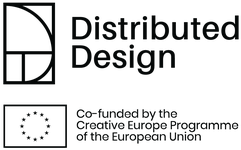Cities are potential engines of the transition towards a circular economy. The City of Amsterdam is one of the early adopters of the circular economy concept at city level. Closed loops, value generation, innovative business models, and modular designs. These are not only principles to guide the transition to circular cities, but also principles distributed designers have been working with for years. In our series Distributed & Regenerative Design, we introduce you to some of the creative talents making an impact. In this article, we interview Jos Krieger, the architect behind Blade-Made, a start-up which repurposes old windmill blades
Can you give us a description of your project?
Blade-Made reuses decommissioned wind turbine blades to make urban furniture, playgrounds, sound barriers and more. The glassfibre reinforced plastics are hard to recycle and very durable, making it a perfect fit for beautiful outdoor installations. However, we are still discovering some of the possibilities as we switch between the manufacturers, policy makers and the energy companies. We offer a solution which is applicable worldwide due to the similarities in windmills.

In what way is your work regenerative and distributed?
The fact that we replace virgin materials with an existing waste flow reduces carbon emissions by roughly 90% compared to conventional products. Besides that, we try to include environmental enhancers to increase biodiversity, store water or grow plants. To further decrease emissions, it can be embedded regionally or even locally, decreasing the need for heavy transport. To do so, it’s important to map the whole chain of events which takes place before it gets a new purpose.
What drives you personally to work on this project?
Although the focus on one material might seem limited, the options are endless. It’s so versatile and since sizes differ a lot, it changes the possibilities for reuse. Furthermore, working with windmill blades is not something just anybody can do, but it’s possible. It lowers the need for recycling and although recycling is good, with windmill blades a lot goes to waste because of the difficulty recycling the materials a windmill blade is made of. By extending its lifespan, you’re able to reduce the waste flow by 90% as mentioned earlier. So, although sounding contradictory, delaying has a lot of opportunities in this case.
What are the next steps to take, when it comes to growing your startup?
We would like to grow along with the waste flow, in the place where material is available at any given moment in time. This means we need a big network of harvest locations, potential contractors and possible clients. The only real option to make this network grow is to build relationships by doing projects. Currently we are looking at Europe, USA and China, but supply and demand go hand in hand. We would like to go beyond the artwork towards products. Simply said: making more of the same. Furthermore, depending on city regulations, parks sometimes have more possibilities. It might be nice to produce, for example, more outside park benches.
How can we encourage more designers to incorporate distributive design principles in their work process?
There is a fine balance between designing unique one-offs and making a replicable process that yields the same results, while some things in the system keep changing. With Blade–Made we try to create a showcase of one material, a couple of designs and something multiple contractors are able to execute. We have not proven that this will work, but we anticipate that good design will lead to an easier process of finding and selecting contractors that are able to build successful projects.
What is your biggest hope for the future and what can we all start (or stop) doing as of tomorrow to contribute to that?
Blade–Made is just one company, with a focus on one material flow, but with a design-strategy that can be applied globally. If we focus more on sharing knowledge than protecting IP, the impact of our actions can increase significantly. It’s also important to put our current ways to a halt. We are running on a system that doesn’t function properly. It’s not maintainable. The change we need will cause pain in some places, but it’s important to go through this pain and divide it fairly amongst people. In this process we can build something that is not just more sustainable, but maybe is also more biodiverse and beautiful.
—
Distributed & Regenerative Design is part of our programme for Distributed Design, the exchange and networking hub for the European maker movement. Want to know more about Distributed & Regenerative Design? Rewatch the programme where Jos explained more of his project at Pakhuis de Zwijger here or check all the Talent interviews here.










